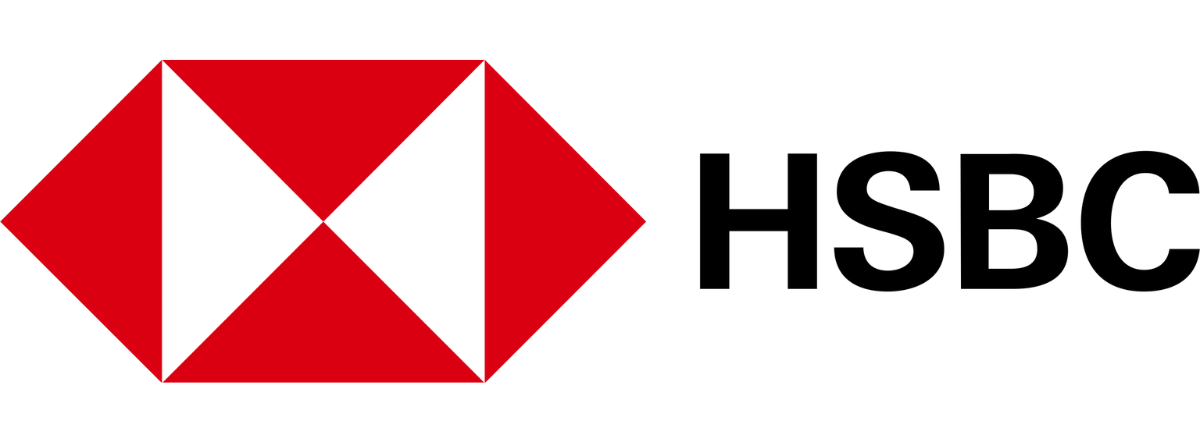If you're a long-term investor in funds, charges are really important. The difference between an annual charge of, say, 1% a year, and 0.3% a year may not seem much, but over a long period, it can add up to a lot of money. (I give an example of how much at the bottom of this article.)
Given that charges are so important, there's a good case for investing in the cheapest ETFs. So here is my latest list of the ten cheapest equity ETFs that are listed in London. Here goes:
Lyxor Core Morningstar UK UCITS ETF GBP (LCUK)
(0.04% TER)
If you want to get broad exposure to the UK market, this ETF offers a very cheap way to do it. It tracks the Morningstar UK NR index which comprises the biggest large and mid-cap companies listed in London - all 336 of them. It's very similar to the FTSE 350 index.
The ETF was launched earlier this year so there is no performance data worth looking at. The fund is also very small at the moment - the size is just £10.8 million. This means it may be illiquid with a large bid-offer spread. (See later for more explanation).
Apart from its low fee, the other big attraction of this ETF is that it's a bit more diverse than a FTSE 100 ETF. But the increase in diversity isn't huge because the biggest companies form such a large slice of the ETF. The ten largest companies comprise 38% of the ETF by value.
Top 5 stocks and sectors in ETF
Stock% of ETF Sector% of ETFHSBC6.3Finance19.6Shell A5.1Consumer Defensive 16.5BP4.8Energy15.0Shell B4.2Consumer Cyclical10.3British American Tobacco 4.1Health9.8
Remember that the UK stock market - especially the FTSE 100 - is very concentrated in a few sectors: Finance, Energy/Mining, and Health. Granted this ETF is a bit broader than the FTSE 100, but you still need to diversify, so it's worth considering investing in the US or other overseas markets
2. Lyxor Core Morningstar US UCITS ETF GBP (LCUS) (0.04% TER)
Lyxor also offers a super-cheap US ETF. It tracks the Morningstar US Large-Mid Cap NR index which comprises 823 large and mid-cap holdings.
Lyxor launched this ETF earlier this year, at the same time as the UK ETF, with the same 0.04% charge.. It's a very cheap way to gain exposure to the US market and the index is a bit broader than the much better known S&P 500 index. The fund size is small - just £44.6 million.
Top 5 stocks and sectors
Company% of ETF Sector % of ETF Apple3.6Tech22.6Microsoft3.1Financials16.1Amazon2.7Healthcare14.0Facebook1.6Consumer Cyclical 12.0JP Morgan Chase 1.5Industrials10.7
3. HSBC Euro Stoxx 50 UCITS ETF GBP (H50E)
0.05% TER
This ETF offers very cheap exposure to European markets. It tracks the Euro Stoxx 50 index which comprises the fifty largest stocks in eurozone stock markets. Even though that's a small number of companies, the Euro Stoxx 50 index still makes up 60% of the combined eurozone stock market. Inevitably these stocks are all large which means there's a 'mega-cap bias' in this ETF. That's a theme that runs through all of the ETFs in this 'top ten.'
As this is a Eurozone fund, it holds no UK stocks. The fund size is £117 million.
Top 5 sectors and stocks
Stocks% of ETF Sectors% of ETFTotal6.1Financials19.6SAP4.5Industrials12.8Siemens 3.9Consumer Cyclical11.4Bayer3.7Consumer Defensive 11Sanofi3.5Health11
4. Invesco Euro Stoxx 50 UCITS ETF GBP (LSE:SX5S)
0.05% TER
This ETF also tracks the Euro Stoxx 50 index. Given that it has the same annual charge as the HSBC Euro Stoxx ETF (just 0.05%), there's very little to choose between the two.
I'm not putting in the top sectors and stocks for this ETF because they're very similar to the HSBC Euro ETF above. The fund size is £381 million.
5. Invesco S&P 500 UCITs ETF GBP (LSE:SPXS) 0.05% TER
This ETF gives you cheap exposure to the US stock market and tracks the S&P 500, which includes stocks on the New York Stock Exchange as well as the tech-heavy Nasdaq index. The four largest stocks in the index are big tech firms but you get good coverage of other sectors too. This is a large ETF, with £2.5 billion under management.
Top 5 sectors and stocks
Stocks% of ETF Sector% of ETF Apple4.3Information Technology26.1Microsoft3.4Healthcare14.2Amazon3.1Financials14.0Facebook1.8Consumer Discretionary 12.7JPMorgan Chase 1.7Industrials9.7
6. Db x-trackers MSCI USA UCITS ETF GBP (LSE:XDUS)
0.07% TER
This US ETF is slightly more expensive than the Invesco S&P ETF, but it's still very cheap at 0.07% - 70p a year on an investment worth £1000.
It doesn't track the S&P index but goes for the less well-known MSCI USA index instead.
This index tracks around 600 stocks so it's a bit bigger than the S&P but not dramatically different. The fund size is £3.35 billion.
7. HSBC FTSE 100 UCITS ETF GBP (LSE:HUKX) 0.07% TER
This ETF tracks the flagship UK index, the FTSE 100 and the fee is very low at 0.07%. However, the Lyxor Core UK Morningstar ETF (see above) is a bit cheaper and broader as well, tracking 336 UK stocks. It's up to you whether you want to pay a tiny bit extra to invest your money in the best known UK index rather than the little known Morningstar UK index. The fund size is £165 million.
8. iShares Core FTSE 100 UCITS ETF (ISF) 0.07% TER
This ETF is very similar to the HSBC FTSE 100 ETF, tracking the same index with the same charge. It's very large with a £5.9 billion fund size.
iShares also operates an almost identical FTSE 100 ETF called the iShares FTSE 100 UCITS ETF (CUKX). It also has an annual charge of 0.07% and £468 million fund size.
If you're wondering why ishares operates two FTSE 100 ETFs, it's because iShares acquired Credit Suisse's ETF business in 2013 and has kept the former Credit Suisse ETFs as separate entities.
9. iShares Core S&P 500 UCITS ETF (CSPX) 0.07% TER
This tracks the S&P 500 and is very similar to the Invesco S&P ETF except that the charge is slightly higher at 0.07%.It's a massive ETF with a fund size of £23 billion. iShares also operates the iShares S&P 500 ETF (IUSA) with a 0.07% TER and £6.3 billion fund size. The Core S&P 500 was formerly operated by Credit Suisse.
10. Vanguard S&P 500 UCITS ETF (LSE:VUSA) 0.07% TER
This is another ETF giving you exposure to the US market by tracking the S&P 500 with a charge of 0.07% a year and an £18.7 billion fund size. That's a very cheap rate, but the Lyxor Core US Morningstar ETF (No.3 in this list) may be a better bet for anyone wanting to invest in the US. That's because it's slightly cheaper and also slightly broader in terms of the number of stocks that are included in the ETF. On the other hand, the Lyxor ETF may be relatively illiquid due to its small size.
Cheap bond ETFs
All of the above cheap ETFs are investing in equities or shares. There are also seven ETFs that charge 0.07% a year which invest in government bonds – either Gilts issued by the Bank of England or Treasuries issued by the Federal Reserve in the US. All of these ETFs are operated by Lyxor.
Here they are:
Lyxor FTSE Actuaries UK Gilts UCITS ETF (LSE:GILS) TER 0.07%
Lyxor FTSE Actuaries UK Gilts 0-5 years UCITS ETF (LSE:GIL5) TER 0.07%
Lyxor FTSE Actuaries UK Gilts Inflation-linked UCITS ETF (LSE:GILI) TER 0.07%
Lyxor iBoxx $ Treasuries 1-3 year UCITS ETF (LSE:U13G) TER 0.07%
Lyxor iBoxx $ Treasuries 3-5 year UCITS ETF (LSE:US35) TER 0.07%
Lyxor iBoxx $ Treasuries 5-7 year UCITS ETF (LSE:U57G) TER 0.07%
Lyxor iBoxx $ Treasuries 7-10 year UCITS ETF (LSE:US71) TER 0.07%
Index trackers
In this article I've focused solely on ETFs but there are also some passive index tracker funds
that are very cheap too.
These index tracker funds are similar to the ETFs highlighted in this article. The crucial point is they're passive funds so the stocks aren't picked by an expensive fund manager. This means the index trackers are nice and cheap.
However, the structure of these index trackers are different from ETFs – they're OEICs. The most important difference between an OEIC and an ETF is that ETFs are traded on the stock market and their share prices change all the time. An OEIC isn't traded on the stock market and its unit price is set once a day. When you sell units in an OEIC, you don't know what price you'll receive.
Here are some of the cheapest index trackers:
UK trackers
Ishares UK Equity Index
TER 0.06%
This fund tracks the FTSE All-share index which is broader than the FTSE 100.
Fidelity Index UK TER 0.06%
Also tracks FTSE All-Share.
Legal & General UK Index TER 0.1%
For many, this fund is a bit more expensive, but if you invest in this fund via Hargreaves Lansdown, the charge is 0.06% a year.
US trackers
Fidelity Index US TER 0.07%
HSBC America Index TER 0.07%
L&G US Index TER 0.1%
But if you invest via Hargreaves Lansdown, the TER is 0.06%
Overall costs
So far in this article, we've just focused on ETF charges, but they're not the only ETF costs. It's also important to think about the bid/offer spread and tracking difference.
The bid-offer spread is the difference between the best buy price (bid) and the best sell price (ask.) If the spread is small, you'll save money. The most liquid ETFs - the ones that are traded the most - should have the smallest or 'tightest' spread. Often the most liquid ETFs will be the largest ones. You'll be able to compare bid/offer spreads for different ETFs on your fund supermarket or stockbroker's website.
Tracking difference is the difference between the performance of an ETF and the underlying index it's tracking. If it's high, that's effectively adding an extra cost to your investment.
The difference charges can make
And finally, here's an example of how much difference charges can make.
Imagine you invest £10,000 in the stock market over a 20-year period and you get a 5% annual return before charges.
If you go for Fund A, you pay a charge of 1% a year, with Fund B, just 0.3% a year. Here are the results after 20 years:
Annual return before chargesAnnual chargeAnnual return after chargesSize of Investment pot after 20 years (£10K at start)Fund A6%1%5%£26,533Fund B6%0.3%5.7%£30,304
This article is an updated version of an article originally published in September 2017.
For more ETF ideas, read Four top emerging markets ETFs and Five top Japan ETFs.





